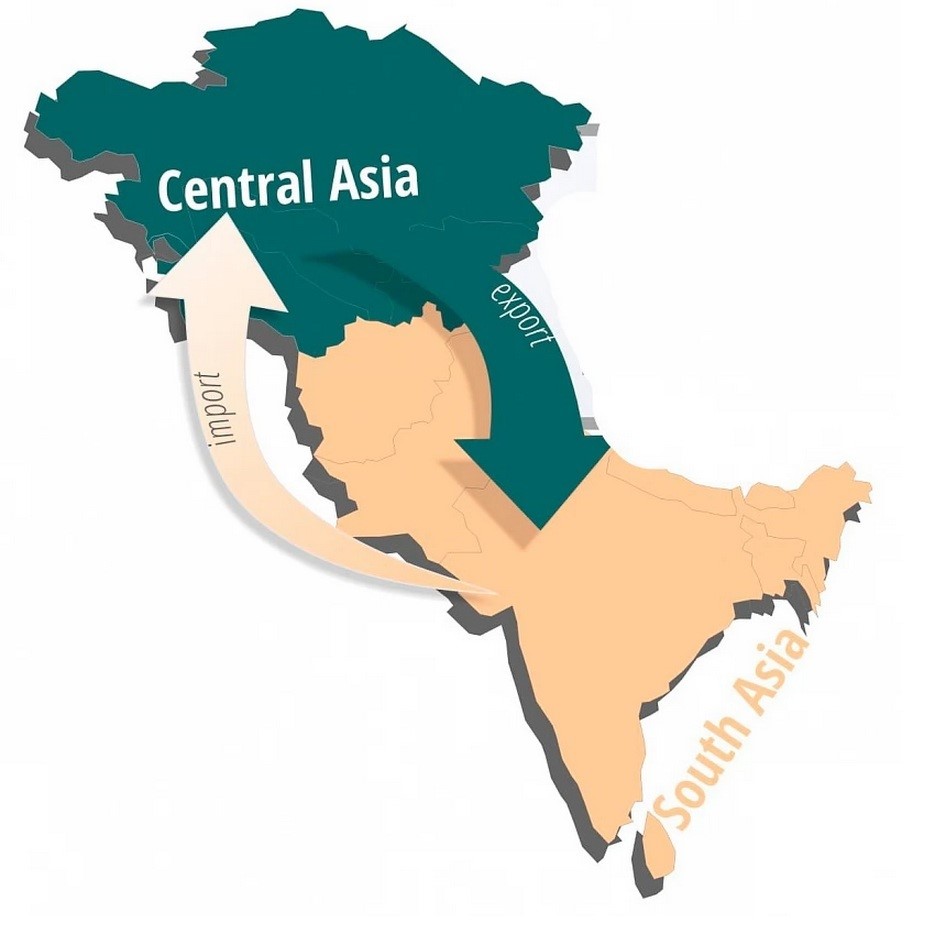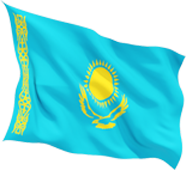At different stages of the historical evolutionary development of international relations, it is known that the geography of regions and “living organisms” – the states that were there – changed. In such shifts in the political map of the world, geographical determinism was manifested as a primary factor, that is, the interconnectedness and causal nexus of events in a certain space, as well as the way of life of the peoples living there.
Over time, the denial of geographical determinism by the leading countries and their struggle to control the regions of the world led to the separation of the peoples who have traditionally lived in a single entity, the division of the spaces (regions) in which they live, the loss of the greatness of national and historical harmony. As a result, an approach was formed to describe both geographical and political character in relation to one region.
For example, with the practice of the “Great Game” concept, Central Asia and South Asia were characterized by being isolated from each other for many years. In relation to the geographical area between them, the toponym “Middle East” was introduced by representatives of the Russian Scientific School. Thus, Afghanistan has become one of the countries of the Middle East. In addition, “while tsarist Russia, later the former Soviet Union, where later transport corridors directed to Central Asia ended at the border of Afghanistan, the railways built by the British (Great Britain) did not even reach the southern borders of Afghanistan.”
As a result, it is well known that for almost two hundred years the two Afghan centers of power have turned into a buffer space separating spheres of influence, geopolitical competition has also determined its sad historical fate, and, moreover, the territory of Afghanistan has become one of the factors hindering the development of political and economic ties between the countries of Central and South Asia.
Central Asia is an object of geopolitical concepts
Since the beginning of the 21st century, new regional approaches to Central and South Asia have emerged, which have been interpreted through institutional changes in the foreign policy of leading countries or through specific geopolitical concepts.
For example, if we conduct a retrospective analysis of the policy of the United States of America (USA) in Central Asia, then since 2005 the state’s policy towards the Central Asian region has been characterized by institutional changes. While the Bureau of European and Eurasian Affairs dealt with Central Asian issues in the US Department of State, since the beginning of 2006, the Bureau for South Asian Affairs was created on the basis of this structure, which was created directly in charge of relations with the countries of Central Asia (Uzbekistan, Kazakhstan, Kyrgyzstan, Tajikistan, Turkmenistan), Afghanistan, India and Pakistan. In time, such approaches, as Condoleezza Rice says, “… show what we are going to do, that is, we need to think about the fact that this region needs integration, and this is a very important goal for us,” – he explained.
There were also scientific approaches aimed at “shaping” the regional policy of the United States in relation to Central and South Asia. In this regard, we can recall the publication of the project “Greater Central Asia Partnership for Cooperation and Development” (2005) by the Central Asia-Caucasus Institute at the Paul H.Nitze School of Advanced International Studies at Johns Hopkins University. The main theses of the project were published in the article of the head of the Institute F.Starr titled “Partnership for Central Asia”. In his opinion, “geographical differences in the US government prevent decision makers from understanding that Afghanistan, Kazakhstan, Kyrgyzstan, Tajikistan, Turkmenistan and Uzbekistan form a single region.” This, in turn, “does not allow for the development of an internally coordinated policy towards Central Asia.”
Thus, the Greater Central Asia project was not fully reflected in the official US policy towards the region. The conceptual difference in approaches lies in the fact that in the project “Greater Central Asia”, put forward by the Institute, Afghanistan was considered as the main factor in regional processes. And in the National Security Strategy (2006) adopted by official Washington, Central Asia was included in the section “South and Central Asia”, noting that “South and Central Asia are regions of extreme strategic importance, where the interests and values of Americans are involved as never before.” The document also states that “US relations with South Asian countries can become the basis for deeper participation in Central Asian affairs” and “Afghanistan can assume the role of a historical bridge between these two important regions – South and Central Asia.”
Following such approaches to Central Asia, within the expert circles, opinions also arose about a new geopolitical concept, for example, about the Greater South Asia project. In the visions of some political scientists, “Greater South Asia” looks more attractive in relation to the idea of “Greater Central Asia” and is able to attract more supporters (both in the United States itself and internationally). The United States can realize the idea of connecting Afghanistan and Central Asia only at the local level – in Central Asia.” The author also said that back in 2005, following the new regional policy of the United States, Central Asia and South Asia were “united by us into a single region, which we called “Greater South Asia”.
The development of events has shown that institutional approaches to the region of Central and South Asia do not correspond to objective reality, or geopolitical concepts are stuck in the shell of paradigms that have no scientific justification.
In our opinion, the reasons for this are as follows:
firstly, the approaches emphasized the conflict situations in Central and South Asia as the main factor, not their solution or compromise with the interests of the warring parties, but rather beneficial populist solutions aimed at transcommunication relations, economic projects and other similar issues. Truly, such projects are needed, but when they are implemented, the practice of decisions made over the years has turned into a paradox, following the disregard of real conditions (the atmosphere of conflicts);
secondly, traditionally the region was considered as a zone of large-scale competition. In practice, the concepts put forward, the conflict environment remained a priority, not a consensus. It was considered extremely important for the West to first remove Central Asia from political and economic dependence on Russia, to gain unlimited control over the natural resources of the region with the financing of projects along alternative corridors from the south-eastern side, to put an end to multilateral competition between Turkey, Iran, China, also with Pakistan and India later joining this process. The geopolitical perspective of the region is characterized directly on the basis of these factors.
The geopolitical processes taking place in the region of Central and South Asia over the past five years force us to reconsider the relations of the leading states in relation to the region. For example, in February 2020, the US administration adopted a new strategy for Central Asia, which is scheduled for 2025. This strategy is significant because it reflects new views on the US approaches to the region, following the reforms carried out in Uzbekistan’s foreign and domestic policy, as well as gratitude for the development of regional cooperation. In particular, in the presentation of the strategy, the American side considered “Central Asia as a region of geostrategic importance” and emphasized “the separation of the process of cooperation with Central Asian countries from US-Afghan relations,” that is, the absence of relations with countries around the region, in particular, related to the participation of the United States in Afghanistan.
In this regard, we can draw attention to the fact that the United States has expressed a desire to consult with like-minded partners through its participation in the C5+1 communication format in Central Asia. Moreover, such an approach is a “new component” of state policy that promotes a comprehensively adequate and clear Western approach to Central Asia.
Some “Central Asian scholars”, traditionally referring to W.Churchill, say that the transformation of the region into a “cash cow waiting for its crocodile” was suicide. Today, the issue of choosing Central Asian countries as partners based on their interests without any external pressure has become a real situation. “Central Asia stands for becoming an open region for everyone, and does not want any state to establish absolute dominance in the region. Maintaining an independent foreign policy and the availability of alternative ways of development” will determine the perspective of Central Asia. This is also the main goal of informal meetings of the heads of Central Asian countries supported by leading countries.
Central Asia and South Asia are one geopolitical space
Central Asia is one of the few regions in the world where blood relatives peoples have lived peacefully and in harmony for centuries. With a land area of 3,962,790 square kilometers (10% of the Asian region), the population of the Central Asian region is more than 75 million or about 1% of the world’s population. At the global level, these indicators may be low, but thanks to the efforts of the “fast–growing regional responsible state” – Uzbekistan, the world is rediscovering not only Central Asia, but also South Asia.
South Asia, on the other hand, is a sub-region of Asia that covers the territories of India, Pakistan, Bangladesh, Nepal, Bhutan, Sri Lanka and the Republic of Maldives. The region is of great geostrategic importance, its total area is 4.5 million square kilometers. This figure means 10% of all Asia and 3% of the world’s land. On the other hand, the region accounts for 38% of Asia’s population and 23% of the world’s one.
We can use these data on two sub-regions of the Asian macroregion as statistical data. Although the public has historically viewed Central and South Asia as one space. The peoples of the regions were connected not only by close state relations, cultural proximity, but also economically, at one time they were one of the important links of the “Great Silk Road”. It is on the basis of the geo-economic factor that Central and South Asia are restoring themselves as a single space.
Today, Central and South Asia is not some kind of “terra incognita”, the processes taking place can be seen at the regional level, in fact, the description of the events taking place relates to the subject of international politics. New transformational processes are being formed in Central and South Asia. This is directly related to the issues of “ensuring the deep integration of the region into global economic, transport and transit corridors.” Moreover, it would not be an exaggeration to say that the transformation of the processes is a direct result of the new regional policy pursued by the New Uzbekistan.
Afghanistan is a country that connects Central and South Asia with each other. For long-term economic relations, it is important that the countries of both regions consider Afghanistan as a significant partner and a country of opportunities.
In our opinion, the real reason for the problem of Afghanistan is that, ultimately, the security of Central and South Asia has lost its balance. In accordance with the principle of indivisible security, it is necessary to restore a balanced, effective and stable security system in Central and South Asia, the only way to truly ensure stability and long-term order in Central and South Asia. Naturally, the cessation of internal political instability in this state will allow the creation of large-scale economic megacities for Central and South Asia, followed by the restoration of long-severed ties.
One of such megaprojects is the “Kabul Corridor”. The construction of a railway through Afghanistan on the principle of the “Blue Ocean Strategy” is of practical importance for Uzbekistan.
Experts believe that if during 1991-2017 Uzbekistan had built railways that would have been transported to China or other Asian countries, then additional markets would have appeared for the economic development of the state. The cost of products produced in the state, the cost of export roads could be reduced by about 70%.
As a result, President Sh.M.Mirziyoyev noted that Uzbekistan still has to export its products through Russia and Kazakhstan. It is expected that with the start of the construction of a railway through Afghanistan, Uzbekistan will diversify its export markets, while neighboring countries are expected to reduce transit tariffs for Uzbek products.
The importance of South Asia for Central Asia is related to the transport and communication system. It is South Asia that provides access to the shortest sea routes for the countries of Central Asia. It is well known that maritime delimitation is one of the factors hindering our economic development. Note that countries with limited access to the sea spend 18% of their export income on transportation costs, while countries with access to the sea spend 9%. In this aspect, one can see the geostrategic significance of the “Kabul Corridor”.
In turn, the geo-economic role of Central Asia is great for South Asia. The Central Asian region is an important bridge connecting the countries of South Asia with the countries of the Commonwealth of Independent States (CIS). Such an environment allows South Asian countries to carry out economic ties overland with the countries of the Russian Federation, Belarus, Ukraine, the Baltic States and the Caucasus region. This is the first. Secondly, it is natural that South Asia is connected by the Uzbekistan-Kyrgyzstan–China International Railway through the Kabul Corridor. As a result, favorable conditions arise for geo-economic cooperation between 4 powerful regions of Eurasia – Europe, Russia, China, and the countries of Central and South Asia.

Central Asia and South Asia are one interconnected region
The road means life. In this regard, the practical significance of the “Kabul Corridor” for the countries of Central and South Asia is associated with:
1) any corridor is considered significant for the participating countries by the extent to which it allows cargo to be transported by itself. In this regard, with the launch of the transafghan railway, it will be possible to transport up to 20 million tons of cargo per year;
2) in economic trade between states, the question of time is considered important. With the practice of the “Kabul Corridor”, the question of time is expected to be reduced by 50% – from 30 to 15 days;
3) with the launch of the corridor, an important route of access to sea routes will open for the countries of Central Asia. The advantage of the “Kabul Corridor” over international trans-communication roads, which is used in practice, can be the creation of conditions for reducing transport costs by 30-35%;
4) being a part of transafghan railway corridor, namely Termez-Mazar-I-Sharif was completed by Uzbekistan, and today this part of the corridor is in use. The 573 km stretch from Mazar-I-Sharif to Peshawar is in the design position. This part of the international railway passes through the Hindu Kush Mountains. The construction of the corridor corresponds to an altitude of about 3,500 meters above sea level, and with this indicator, it is expected that the corridor will become one of the highest railways in the world.
Despite the fact that today there is a common history, cultural proximity and geographically the regions are neighbors, the indicators of economic cooperation between Central Asia and South Asia are at a low level. For example, in 2020, the total trade turnover of Central Asian countries with countries from different regions of the world amounted to about 170 billion US dollars.
If we take this as 100%, then the difference between the countries of Central Asia and South Asia corresponds to 2.5%, that is, about 4 billion US dollars. Although the population of South Asian countries is about 2 billion people, and there is a dynamic development market in the region. The annual growth of the gross domestic product (GDP) of South Asia is 6-7% and the GDP is 3.4 trillion US dollars.
For now, let’s focus on India. The main part of South Asia falls on India, and this state is geographically the center of the region. Other countries are located around it. Only India borders all the countries of South Asia by land and water. In addition, 73.4% of the territory of the South Asian region, 76.5% of the population and 80% of the total gross national product (GNP) in the region also belong to India alone. These records show that India has certain advantages in the region.
Prospects of regional relations
There are great opportunities for interaction and cooperation in Central and South Asia. It is the practice of the Kabul Corridor, which is the initiative of Uzbekistan, that can create the necessary conditions for untapped opportunities.
In our opinion, the interconnection of Central and South Asia, the emergence of new geo-economic projects should be considered as an evolutionary development of the internal neighborhood policy pursued by the New Uzbekistan. While Uzbekistan’s domestic neighborhood policy primarily implies cooperation between the countries of Central Asia, the next stage of the processes indicates that the region is also connected with South Asia. On the other hand, Central and South Asia prefer not to create any integration structures and unite through them, but politically institutionalized (without integration) cooperation. This approach is assessed as a result of the promising foreign policy of the countries of Central and South Asia, including Uzbekistan.
The crisis situation in the world serves to show the negative and positive aspects of international life to international economic relations, as well as to open up new opportunities for the foreign policy of states in a changing international environment. In this regard, the changing paradigms of cooperation between the countries of the Central and South Asian regions, as well as new trends in geo-economic relations of the countries of the regions are becoming urgent issues of our daily life.
Bakhrom Khujanov,
Ph.D., Associate Professor











